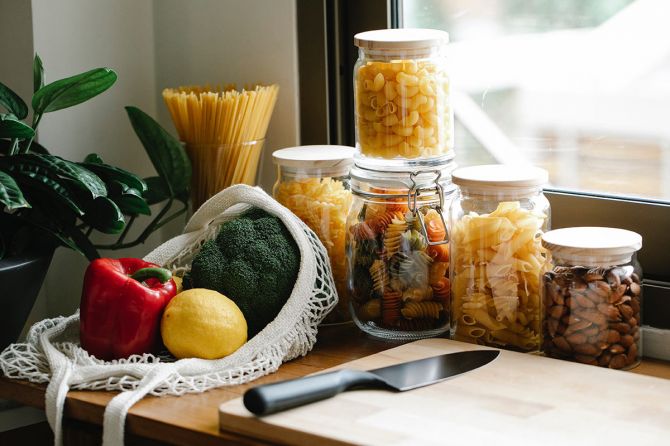Sight, smell and touch will help ensure that you are picking up something fresh and ready to use, suggests Dr Sulaiman Ladhani.

With the changing weather conditions, eating fresh, healthy food is extremely crucial to stay healthy and free from infections.
Be it fruits or vegetables, it is very important to consume them fresh, else they begin to lose their nutritional value.
Consuming stale or expired food may also lead to stomach infections making you sick.
You must store foods in the right place, to avoid over ripening and prevent them from getting spoiled.
Follow these basic tips to ensure your every day ingredients are healthy for consumption:
How to buy fresh vegetables and fruits
Sight, smell and touch will help ensure that you are picking up something fresh and ready to use.
For example, if you are buying bananas, try to see if it is bright yellow with some spotting. If there are too soft or brown, that means they are not fresh.
Leave them behind if they are green. That means they'll be perfect for eating in a day or two.
Apples, maybe soft, but you need to ensure it is not dark or very soft. Some people like it hard and juicy.
While buying any fruit, check if they are fresh, too soft (overripe) or if they have too many spots on them.
Similarly, vegetables should be bright green without too many spots and shouldn't be too soft or soggy.
Some fruits are seasonal. Try to avoid buying fruits which are not seasonal as they may be grown using artificial methods and may not be good for consumption.
Similarly, for meat, try to buy fresh products from the market.
If you are buying packaged meat, check the date of packaging.
Sometimes looking at the colour may also help you determine if it's fit for consumption. For example, red and fresh meat would be a better choice than brownish and slippery meat with liquid.
How to store fruits, veggies and meat
Storing of food is also very important.
Basically foods can be classified into three groups -- perishable, semi-perishable and non-perishable -- and each group will require different storage methods.
First is the perishable foods.
This may include many raw fruits and vegetables for those who eat them.
Meat, dairy, eggs, all cooked foods are considered to be perishable foods. To store these foods for any length of time, perishable foods need to be held at refrigerator or freezer temperatures.
Even if they are refrigerated, many perishable food should be used within three to seven days or less for many animal products like meat.
Next is semi-perishable foods. Depending on how they're stored and handled, they can go bad quickly or have an extended shelf life.
Flour, green products, dried fruits and dry mixes are considered to be semi-perishable. And if optimally stored and handled like in a clean vacuum sealed bag, semi-perishable foods may remain unspoiled for a longer period, up to six months to a year.
If frozen, they can even last longer.
Third is staple or non perishable foods.
Dried beans, spices, and canned goods are all non-perishable foods. They won't spoil unless they are handled carelessly.
However, if they are not stored under ideal conditions, they can start to lose quality over extended periods of time.
The golden rule for perishable and semi-perishable foods is if you can't use it promptly, it needs to be stored or preserved.
It's very important to check for sight, smell and touch for signs of spoilage.
For example, if there is visible mold, if the texture is abnormal, the colour of food seems off, or there is a foul smell coming out of the food, you need to discard them right away.
Refrigeration vs ventilation
Most fruits and vegetables can be stored in the refrigerator or crisper drawer or the lower drawer.
Refrigeration will help protect, produce and retain the moisture which is essential to maintain freshness for a long time.
For example, if you do not plan to consume fresh apples in the next few days, they should be stored in the fridge. Apples tend to spoil 10 times faster at room temperature.
Similarly, carrots should be stored in the fridge. You will need to peel them whenever you're ready to use.
Freezing fruits at home is a fast and convenient way to preserve, produce at the peak maturity and make them last longer and preserve the nutritional quality.
However, certain fruits and vegetables should not be frozen, especially eggplant, potatoes, radishes, sprouts, and sweet potatoes.
Garlic and onion should be kept at room temperature in a well-ventilated area.
Tomatoes should be stored at room temperature and washed just before using.
Certain fruits and vegetables should be kept in the refrigerator, not in the freezer.
Bananas, tomatoes and potatoes should be kept in a cool, dry area and not in the fridge.
Mushrooms, too can be kept in a cool, dry place and should be washed before use.
Potatoes should be kept in a place with plenty of ventilation.
If you want to preserve for a longer period of time, the freezer is a better option, especially for cut fruits and vegetables.
At the same time, it's important to consume them at the right time.
To ensure frozen food is safe, storing at zero degrees will always be safe.
Do remember that the longer you freeze them, the quality suffers. Freezing only slows down the molecules and causes microbes to enter a dormant stage.
And this preserves the food for extended period because it prevents the growth of micro-organisms that cause both food spoilage and foodborne illnesses. So, freezing inactivates any microbes, bacteria, yeast, and molds present in the food.
However, once you thaw them, these microbes can again become active multiplying under the right conditions to levels that can lead to foodborne illnesses.
By doing so, it is possible they will then grow at about the same rate as micro-organisms on the fresh food.
You must handle thawed items as you would any perishable food as mentioned above.
Freshness and quality at the time of freezing affect the condition of frozen foods.
Foods that are frozen at peak quality emerge tasting better than foods frozen near the end of the useful life.
So, freeze items you won't use quickly sooner rather than later.
Store all foods at zero degrees, Fahrenheit or lower to retain vitamin content, colour, flavour, and texture.
Freezing does not destroy nutrients, it only delays the growth of microbes and bacteria.
How to use plastic bags or brown bags for storage
Plastic bags with tiny vents help keep vegetables fresh longer by releasing moisture.
They are great for certain fruits like grapes or cut fruits, cherries, or strawberries, and help them last longer.
Mangoes, plum, peaches and pears can be ripened at room temperature in a brown paper bag, and should be refrigerated if you want to use it or keep it for longer storage.
Dr Sulaiman Ladhani is consulting chest physician, Masina Hospital, Mumbai.











